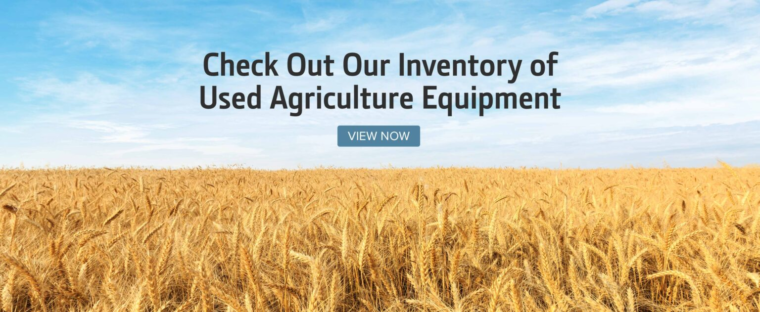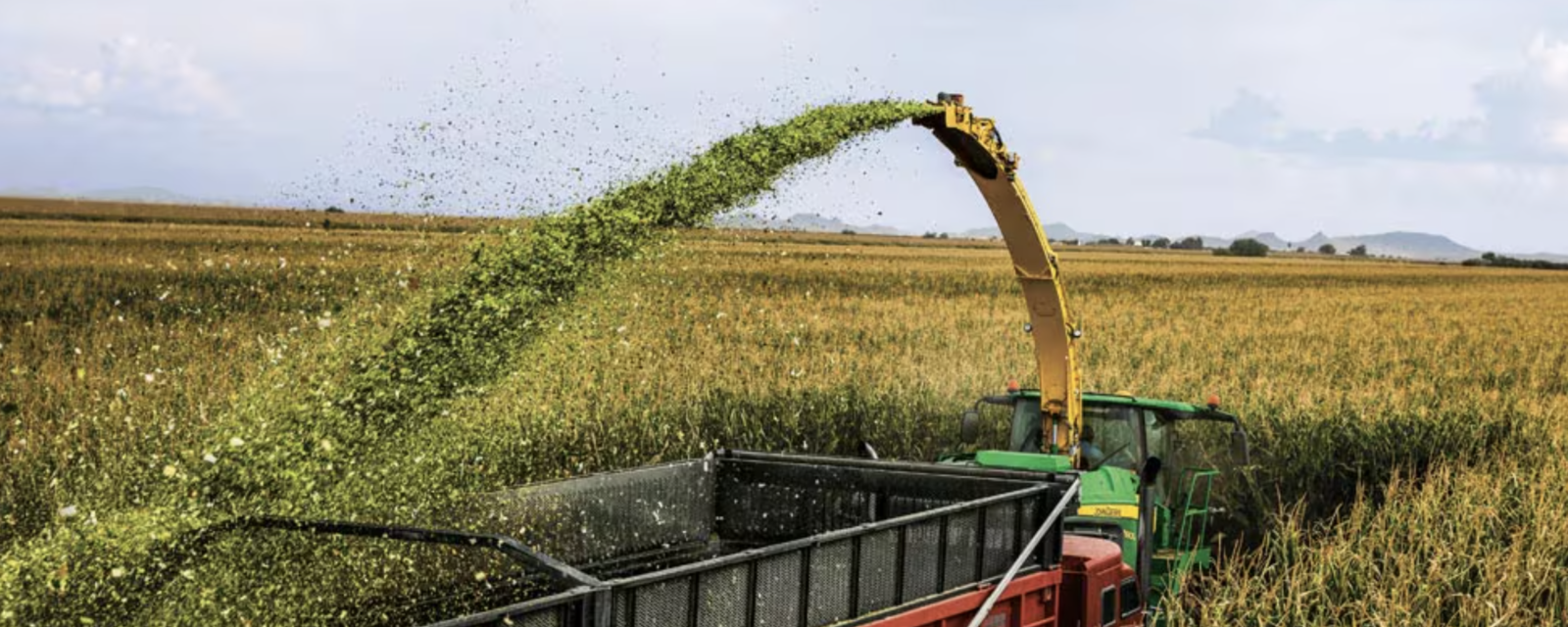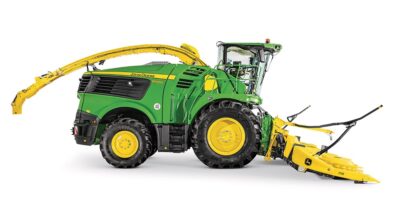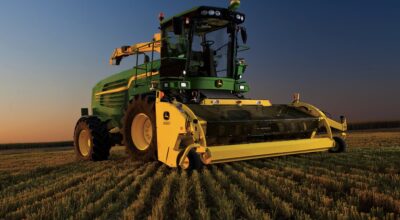Harvesting forage plants to make silage can be challenging. The John Deere 9500 and 9600 self-propelled forage harvesters offer the power, efficiency, and versatility to get the job done right.
Unlike pull-type forage harvesters, which are towed by a tractor, self-propelled forage harvesters have their own engine and drive system.

This makes them highly maneuverable and capable of operating independently in the field. Additionally, the 9500 and 9600 share a powerful engine, high-capacity feeding systems, and other key features that improve the forage harvesting process.
However, the 9500 and 9600 differ in a few important ways, particularly in the amount of power they deliver. By evaluating the two models side by side, you can gain a better understanding of which model is the right fit for your operation’s unique requirements.
What Is a John Deere 9500 Self-Propelled Forage Harvester?
The John Deere 9500 is part of the 9000 Series self-propelled forage harvesters, known for their power, efficiency, and advanced technology. Equipped with the new JD18X 18.0 L engine, this model is designed to handle large-scale forage harvesting operations, providing high-quality silage with reduced operator fatigue.
What Is a John Deere 9600 Self-Propelled Forage Harvester?
The John Deere 9600 is another powerhouse in the 9000 Series lineup, boasting similar advancements as the 9500 but with even greater power. It shares many of the same features but is designed for even more demanding forage harvesting tasks.
John Deere 9500 vs. 9600: Key Features
The John Deere 9500 and 9600 share many of the same features, making them both powerful, efficient, and versatile machines.
Powerful JD18X Engine
Both the John Deere 9500 and 9600 are equipped with the highly efficient JD18X engine. This diesel-only engine provides strong, steady power, with the 9500 rated for up to 690 HP and the 9600 rated for up to 740 HP.
HarvestMotion Plus Concept
The HarvestMotion Plus concept in both models enables the engine to deliver more power at lower RPMs. In addition to delivering a steady crop flow, this feature reduces fluid fuel consumption by 13% — with no diesel exhaust fluid (DEF) required.
High-Capacity Feeding
Both the 9500 and 9600 feature high-capacity feeding systems designed to handle large volumes of crop material. The variable header drive system synchronizes header speed with feeding speed and chop length, which ensures high-quality chopping and gentle, even crop transfer from header to machine. There are two primary header designs available: the versatile 600plus Series, which can handle a variety of crops up to 13.1 ft (4 m) tall, and the 700plus Series, designed specifically for high-yielding crops.
Two Kernel Processing Options
John Deere offers two kernel processing options for both models: the John Deere Premium KP™ kernel processor and the John Deere XStream KP™ Kernel Processor. Developed in partnership with Scherer, Inc., the heavy-duty XStream is designed for use with powerful, high-throughput equipment. While more lightweight, the Premium option still delivers high silage quality at any length of cut.
Dura Line™ Wear Parts
Both the 9500 and 9600 come with Dura Line™ wear parts, which are designed to extend the life of critical components. These components feature a proprietary tungsten carbide coating, making them exceptionally wear-resistant and smooth, thus reducing crop friction and fuel consumption. Dura Line parts last four times longer than standard parts, significantly cutting down on replacement costs and maintenance time.
HarvestLab™ 3000 System
The HarvestLab™ 3000 system is a key feature in both models. It measures moisture and nutrient values in real time, allowing operators to make immediate adjustments to inoculant dosage and length-of-cut on the go. This technology is crucial for producing high-quality silage consistently.
AutoLoc™ System
The AutoLoc™ system automates length-of-cut adjustments based on readings from the HarvestLab 3000 sensors. This feature improves bunk density and overall forage quality.
John Deere 9500 vs. 9600: Key Specifications
The 9500 and 9600 share most of the same specifications, but differ in their respective engines’ maximum and rated power.
Maximum Power
The John Deere 9500 reaches a maximum power of 755 hp, while the 9600 can reach 776 hp.
Rated Power
The John Deere 9500 is rated for 690 hp, while the 9600 is rated for 740 hp.
Engine Type
Both models feature the JD18X 18.0 L diesel engine, known for its power and efficiency.
Engine Displacement
Both the 9500 and 9600 have an engine displacement of 18.0 L, ensuring ample power for demanding tasks.
Engine Cylinders
The engines in both models are equipped with six in-line cylinders to support high performance and efficiency.
Fuel System
The JD18X engines in both models are diesel-only, providing reliable and efficient power.
Fuel Tank Capacity
Both the 9500 and 9600 have a fuel tank capacity of 396 gallons (1500 L), allowing for extended operation without frequent refueling.
John Deere 9500 vs. 9600: Which Harvester Is Right for You?
Choosing between the John Deere 9500 and 9600 depends on your specific farming needs and the scale of your operations. Both machines offer impressive power, efficiency, and advanced technology.
However, with its higher rated and maximum horsepower, the 9600 may be more suitable for larger-scale farming operations and more extreme processing needs.
Whether you choose the 9500 or the 9600, you can be confident that you are investing in a high-quality machine that will enhance your forage harvesting capabilities.

Ready to invest in high-quality agricultural equipment? Visit your local John Deere dealer today.



